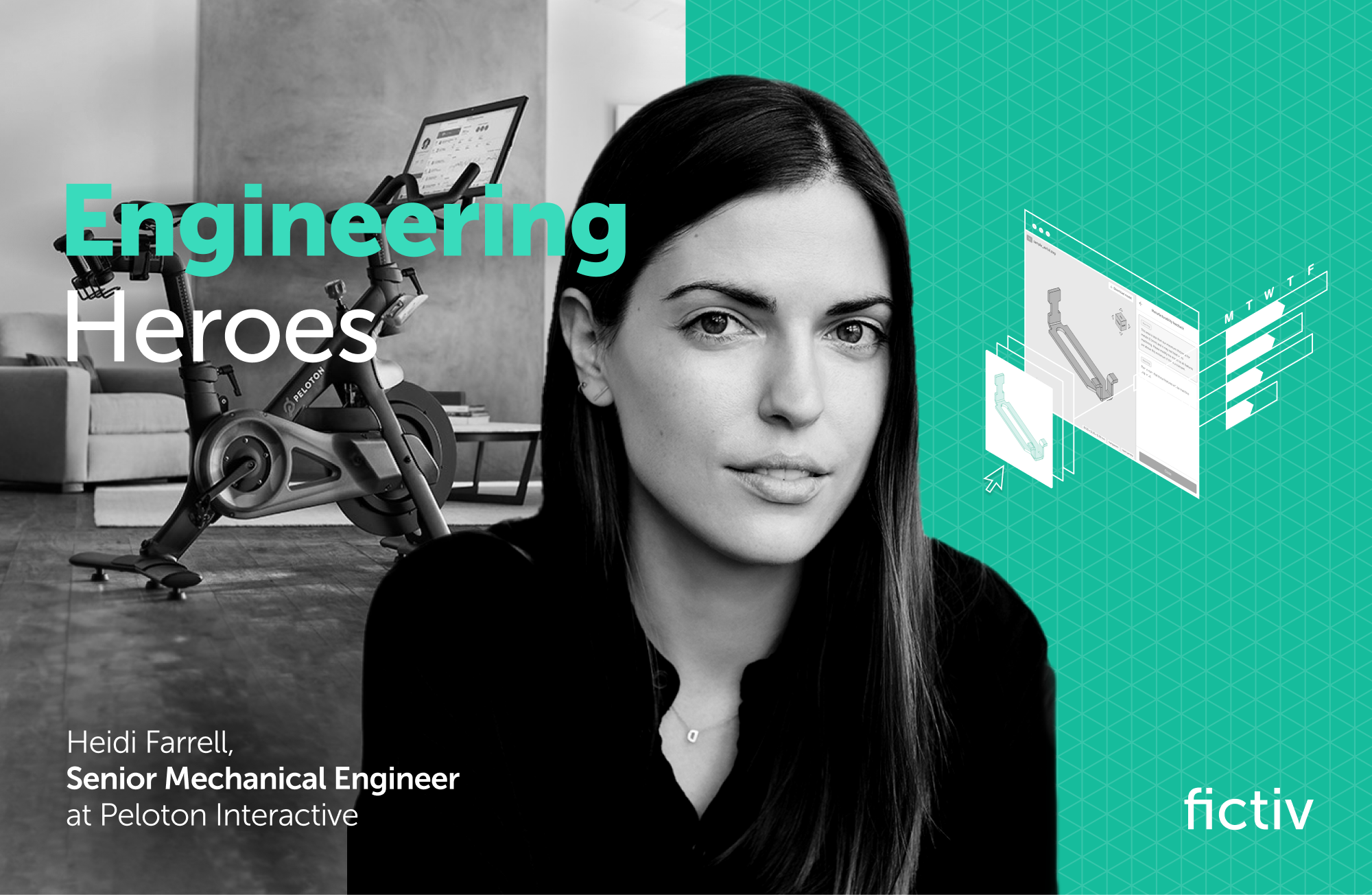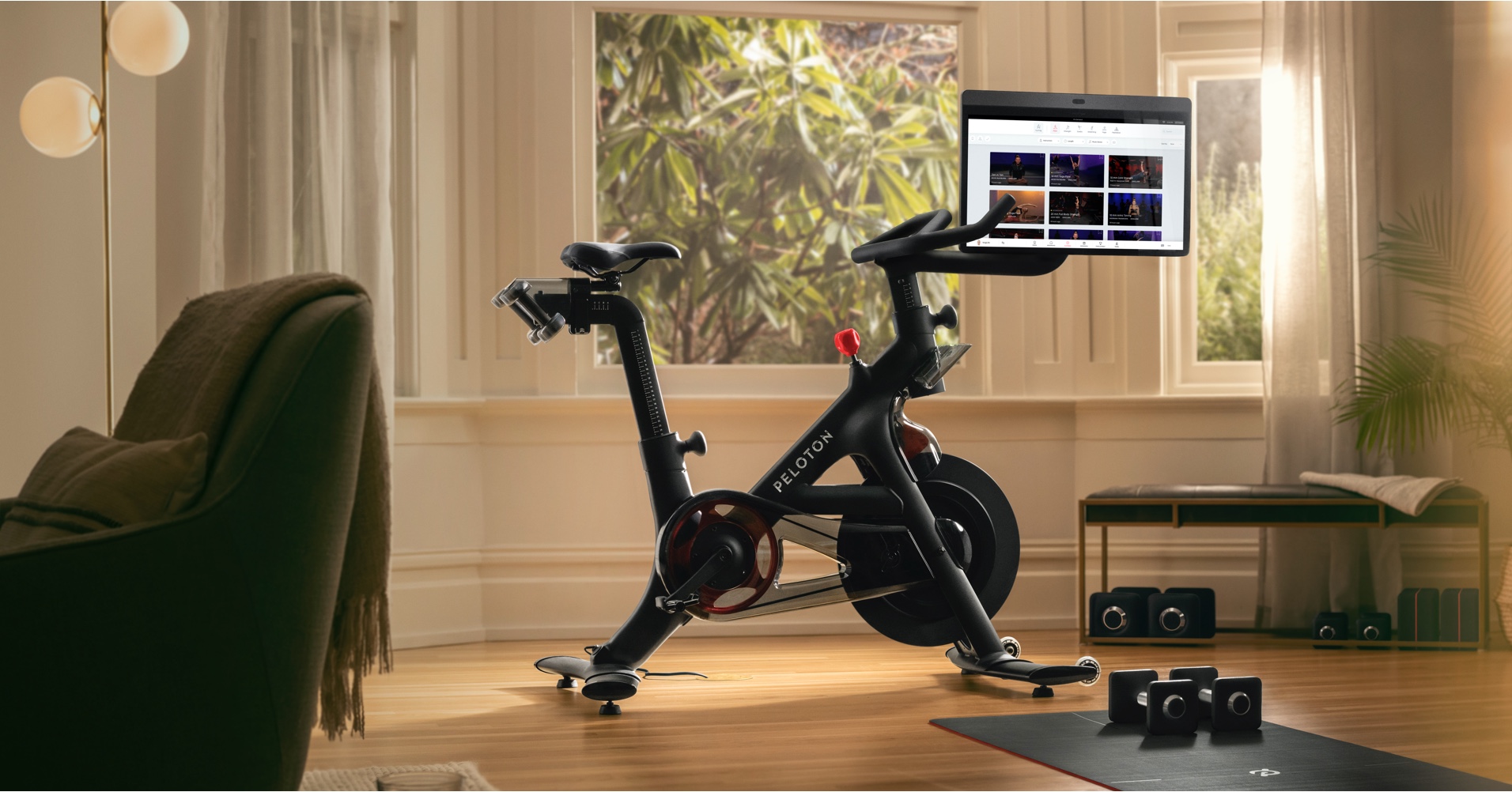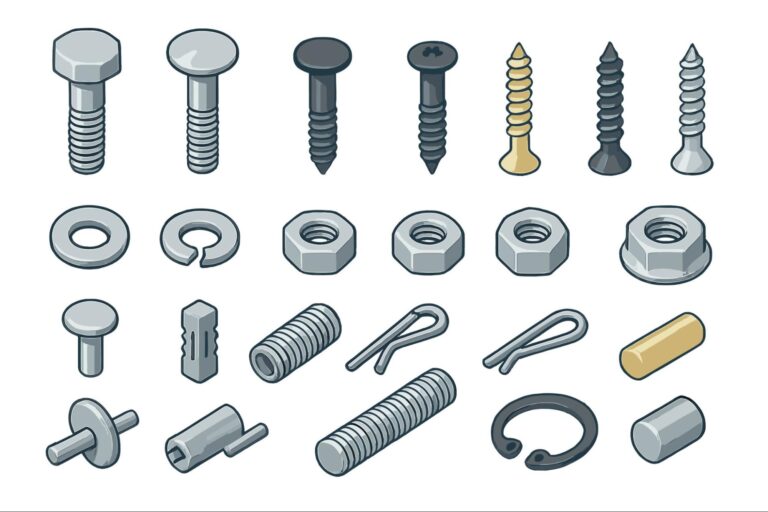Time to read: 4 min

Welcome to Engineering Heroes: a series where we interview the mechanical engineers behind innovative products to uncover actionable tips, advice, and best practices to help you optimize your own mechanical design workflows.
For this edition we sat down with Heidi Farrell, Sr. Mechanical Engineer at Peloton to learn about an impressive tip for collaborating on design iterations with colleagues, her go-to engineering resource to get answers, and a unique folder structure that helps keep her organized.
Heidi has a B.S. in Product Design Engineering from Stanford University. Prior to joining Peloton, she worked at camera equipment startup, Joby, wearables startup Ringly, and product design firms Smart Design, based in NYC, and Reload Design AB, based in Stockholm.
At Peloton, she is a mechanical engineering lead on the Tablets team, developing the screen display for the bike and treadmill products.

Without further ado, here’s what we learned from Heidi.
What’s the best habit you’ve picked up in your career as a mechanical engineer?
Heidi: If I’m working through a specific issue with a cross-section view—for example, I’m considering changing a wall thickness or adding a snap—I’ll print out the cross-section in black and white wireframe view and print out like 12 of them, maybe four per page. Then using colored markers, and being very conscious about color usage (for example, the cover is always yellow and the screws always green), I start drawing all the different iterations in each cross-section. So each one represents an idea.
They’re really easy to scan and use in presentations to compare options side-by-side. It’s just so much better than trying to do a free hand cross-section and such a good tool for working with other people. It’s something that people are impressed by, but it’s not hard to do!
What do you love most about being a mechanical engineer?
Heidi: I really like the no bullshit aspect of engineering. It’s very unlike other professions where you might be able to present something with, like, a lot of pizazz or whatever, or you can talk a good game and maybe get through. Engineering is a profession where there are a lot of very real and human variables involved. So you have to have a lot of street smarts and you do what you say you’re going to do. People learn pretty quickly if you’re reliable — it’s a very honest profession.
“Engineering is a profession where there are a lot of very real and human variables involved. So you have to have a lot of street smarts and you do what you say you’re going to do.“
What’s something you learned from a co-worker that’s made your job easier?
Heidi: I picked up this amazing folder saving structure from Akbar Dhanaliwala, the head of manufacturing at Ringly that’s been super useful. Basically, anytime he would receive an email that had an attachment, he would save the attachment in really simple folder systems, starting with the name of the project and then sub folders named to different vendors, with additional subfolders marking the date/description of the files.
So he had this master catalog and library of every attachment he’d ever received or sent anyone all on his desktop. I thought this was incredible because anyone else would be hunting like mad to find things in their inbox. I’ve shared this system with other people at Peloton who have wild download folders.
What are your go-to resources to sharpen your engineering skills?
Heidi: I really think my coworkers are my best resource because I’m constantly asking them questions. Also, I regularly use the alumni email list from Stanford Product Design. For example, a week ago I needed a CNC router in the Bay Area and I searched every email I had received and sure enough, like five years ago, someone had asked the question to the list and so I immediately had five vendors I could talk to. I really feel like people are the best resource.
“I really think my coworkers are my best resource because I’m constantly asking them questions.”
How does Fictiv help empower you in your job?
Heidi: During COVID Fictiv has been insanely helpful. Just a couple of months ago, I was prototyping a design and needed to evaluate several different options for a piece of geometry. I wanted to print multiple versions in case I needed to hand-modify something on any of the units since I had a deadline coming up.
If I had to print 16 things myself on a printer, it would probably take me a whole day to process the prints and remove the support material and everything. So it was a lifesaver to get all the parts processed two days later and know it was a guaranteed delivery I could count on.
When you’re tied to a 3D printer in one location that has one build material in it and you’re fighting for time with other engineers on the build tray, it can be stressful. So Fictiv really simplified things for me and took a lot of the stress out of it.
“It was a lifesaver to get all the parts processed two days later and know it was a guaranteed delivery I could count on.”
Subscribe below to get the next Engineering Heroes edition delivered to your inbox!










